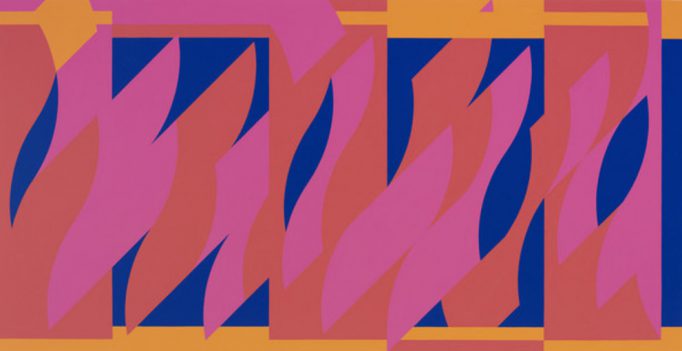24 November 2010 -22 May 2011, London, United Kingdom
Situation
Running from 24/11/10 – 22/05/11, the exhibition features a strong collection of Dame Riley’s recent work plus one retrospective piece, ‘Man with a Red Turban (After van Eyck)’ 1947. The situation of the Sunley room and the surrounding space has allowed the artist to display her work to good effect which reflects an adept awareness of shape, repetition, pattern, colour and scale. But more importantly when and where not to use them.
Method and Influences
We are lucky enough to get a glimpse into the earlier work and influences of Riley’s creative mind. How, you ask? A small section is devoted to this very thing. One can see, ‘Man with a Red Turban (After van Eyck)’ 1947, a painting in Rennaisance style, it is simple but from it can be derived an appreciation of perhaps where her interest in optical art came, many of the greats can also be thought of as illusionists. Fittingly this piece is accompanied with paintings by the masters Seurat, Raphael and Mantegna.
Colour and Series
The colour in these exhibition pieces are at two ends of the scale. In ‘Arcadia 1 (Wall Painting 1)’ 2007, colour is used brightly and with enough confidence to be considered strong yet feels quite cool. By comparison, ‘Red with Red 1’ 2007 has a more intesne visual meter, the colour is richer, purer and resonates in sympathy with Matisse’s ‘The Desert, Harmony in Red’ 1908.
Shape and Form
Line, overlaps, curves, series and patternation, if it could be said that colour is one essential part of Riley’s style whether monochrome or colour then it must be acknowledged that delineation exerts a profound influence and is perhaps they key to this optical magic. The exactitude of demarcation, method and technique allow one to appreciate the skill and effort that goes into such a body of work as featured in this exhibition, Bridget Riley’s latest offering.
Application and Scale
The varying sizes and scales of each work are so important to get right, for example in ‘Composition with Circles 7’ 2010, the largest scale piece really shows the retinal nature of seeing, it evinces this by encompassing the full side of a wall, it is shaped with concentric circles (as seen above) that overlap so that when seen reify the bodily aspects of vision and nature of sight. When contrasted with ‘Saraband’ 1985, a smaller contained piece the differences in scale pale away to nothing as in smaller works the focused frame and nucleated effect also achieve equally strong optical affect.
OUTLINE
A strong exhibition that shows both Dame Bridget Riley’s recent work and some earlier influences.
www.nationalgallery.org.uk/whats-on/exhibitions/bridget-riley
written by: Colin Humphrey
